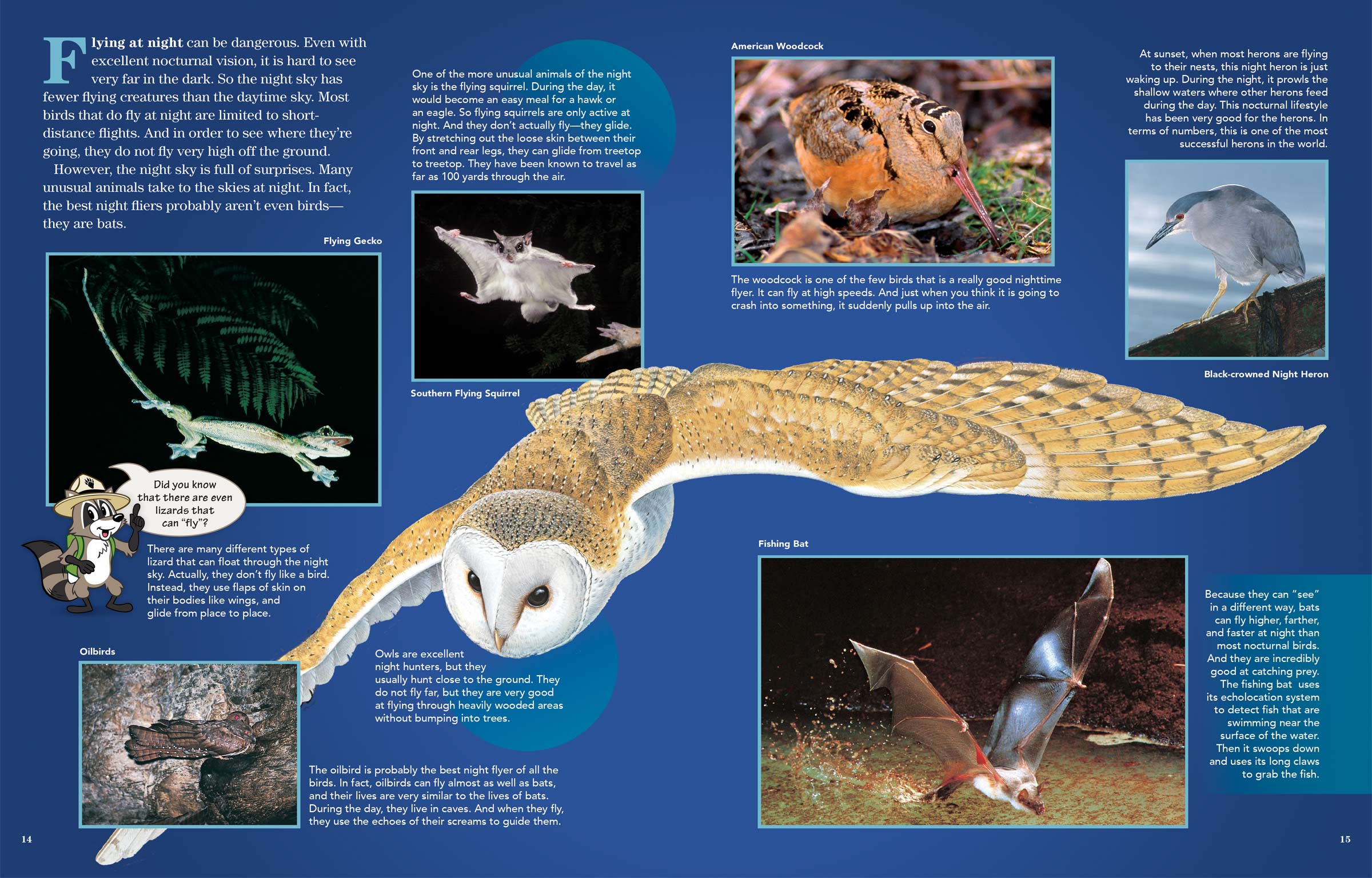
Flying in the Dark
ByFlying at night can be dangerous. Even with excellent nocturnal vision, it is hard to see very far in the dark. So the night sky has fewer flying creatures than the daytime sky. Most birds that do fly at night are limited to short-distance flights. And in order to see where they’re going, they do not fly very high off the ground.
However, the night sky is full of surprises. Many unusual animals take to the skies at night. In fact, the best night fliers probably aren’t even birds—they are bats.
One of the more unusual animals of the night sky is the flying squirrel. During the day, it would become an easy meal for a hawk or an eagle. So flying squirrels are only active at night. And they don’t actually fly—they glide. By stretching out the loose skin between their front and rear legs, they can glide from treetop to treetop. They have been known to travel as far as 100 yards through the air.
Did you know that there are even lizards that can “fly”? 
There are many different types of lizard that can float through the night sky. Actually, they don’t fly like a bird. Instead, they use flaps of skin on their bodies like wings, and glide from place to place.
Owls are excellent night hunters, but they usually hunt close to the ground. They do not fly far, but they are very good at flying through heavily wooded areas without bumping into trees.
The oilbird is probably the best night flyer of all the birds. In fact, oilbirds can fly almost as well as bats, and their lives are very similar to the lives of bats. During the day, they live in caves. And when they fly, they use the echoes of their screams to guide them.
The woodcock is one of the few birds that is a really good nighttime flyer. It can fly at high speeds. And just when you think it is going to crash into something, it suddenly pulls up into the air.
At sunset, when most herons are flying to their nests, this night heron is just waking up. During the night, it prowls the shallow waters where other herons feed during the day. This nocturnal lifestyle has been very good for the herons. In terms of numbers, this is one of the most successful herons in the world.
Because they can “see” in a different way, bats can fly higher, farther, and faster at night than most nocturnal birds. And they are incredibly good at catching prey. The fishing bat uses its echolocation system to detect fish that are swimming near the surface of the water. Then it swoops down and uses its long claws to grab the fish.

